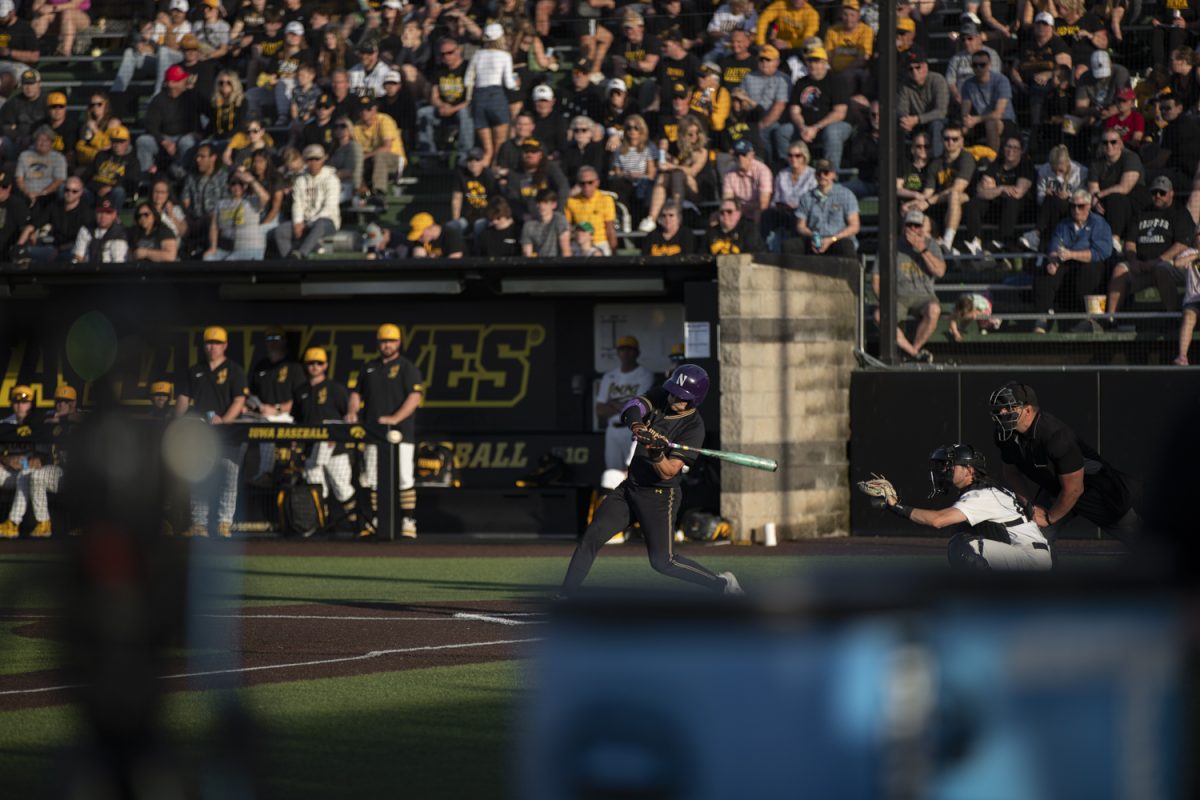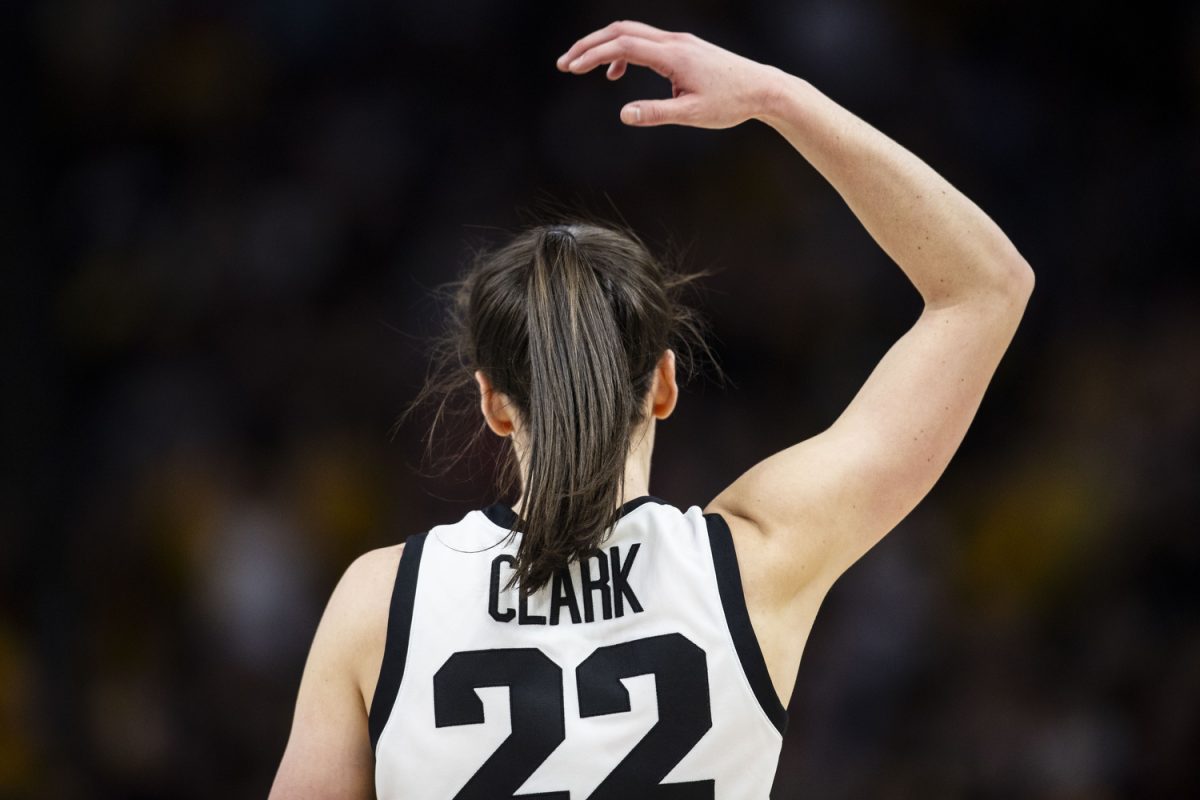Cheyanne Boddicker spends her Sunday afternoon training in Coralville. Sandbag weights hug her ankles. Her legs crank at a 90-degree angle, and she grips a 14-pound medicine ball overhead, her elbows locked in place.
Back to cardio.
She sprints, pivots 180 degrees, and bolts back. Her trainer and brother Mike Boddicker rests against a nearby concrete wall, his sleeveless shirt revealing tattoos and an abundance of upper body strength.
Panting, Cheyanne takes a break.
“Let me guess: again?” she asks her younger sibling, knowing the answer.
“Always,” he responds.
Weight training, aerobic conditioning, and a hell of a lot of swimming.
The last year and a half has been excruciating for Cheyanne. The University of Iowa alumna has decided to attempt to swim the English Channel in August to raise money for the Holden Comprehensive Cancer Center, a cancer-research foundation at the UI Hospitals and Clinics.
The native of Tipton hopes to raise $25,000 to help the development of new research projects.
“When my grandfather passed away [after dealing with prostate cancer for 10 years], I had kind of had this dream of mine to swim the English Channel,” she said. “But I never thought I would actually do it.”
Her grandfather was one of 569,490 people in the United States to die from cancer in 2010, according to the American Cancer Society.
Boddicker also lost an uncle who succumbed to Hodgkin’s lymphoma, a cancer that originates in the white blood cells. Two of Boddicker’s aunts also battled cancer, and they survived.
The connection between her life as an athlete meshed with her interest in philanthropy in 2008 during an internship at CENTERSTAGE, a nonprofit theater in Baltimore.
There, she interacted with inner-city children in a program called Encounter, which gave youngsters the opportunity to watch plays and encouraged them to write, produce, and act in plays. Working with them inspired her to seek out a philanthropic career path.
“We got to become really familiar with our donors,” she said. “It was always really interesting, because here they had all this money, and they very easily could have chosen to spend it on themselves.”
Boddicker returned to Iowa City in the summer of 2009, and the former theater-performing-arts entrepreneurship major searched for a career path that would involve her desire to help others. She decided to dedicate her efforts to fundraising after enrolling in the master’s in philanthropy and development program at St. Mary’s University of Minnesota.
Approximately a year and a half later, Boddicker — with the help of her younger brother — is training her body for the 21-nautical-mile swim.
“Everything she does now, you can definitely tell, is oriented to fulfill this goal,” said Mike Boddicker, a staff sergeant in the Army who lives in Iowa City. “It is really exciting for me.”
The long road
Mike’s plan for preparing his sister for the ever-changing currents and crashing waves is constant muscle confusion. The idea is to prevent her body from peaking before the swim.
The training regimen the 25-year-old has laid out is complex, varied, and grueling.
“With the way she swims, when she does thousands of yards a day, her body gets used to that,” he said.
Up until seven months ago Cheyanne abstained from swimming to avoid burning out her shoulders. Until August 2010, the swimmer focused on building her endurance with runs and strengthening her core.
Since then, she has gradually built up the distance she swims in a week — 11 to 30 miles. In April, she plans to leave the pool to train in the Coralville Reservoir and Lake Michigan to help her prepare for the currents she will face in the Channel.
But swimming is just part of the training.
She also runs on tracks, treadmills, and stairs, often with ankle and wrist weights. She does a variety of strength-training exercises — from wall squats to chest presses. Her training at present is focusing on building muscle, particularly her core and leg strength.
Her brother is there, every squat, press, and stroke.
“We do all that training together; he’s pretty intense when it comes to that,” she said. “All that he puts me through will make the Channel seem not so bad because it’s so hard.”
Mike developed the program for himself to lose weight and build muscle while he was stationed in Egypt.
“When I deployed back in ’08, I was not the most physically fit person,” he said. “I weighed about 280 pounds.”
After experimenting with several formulas, he found a system that worked well for his body type. He returned to the United States at 219 pounds.
“I don’t want to hear her complain,” he said. “I’m like the biggest jerk when it comes to the weight room. We go in there, I put my tunes on, and if she’s talking, I’m not listening. I’m not there to have a conversation. I’m there to make myself better; I’m there to make her better.”
Diet is also an important component. Cheyanne consumes upwards of 7,000 calories a day to compensate for the energy she burns and to maintain her current weight.
“She can’t be losing fat per se, because that’s what’s going to keep her warm,” Mike said.
For protein, she eats roughly eight egg whites a day. She also takes vitamin supplements to prevent her body from deteriorating because of the high energy output.
“As much as she’s training, I’m trying to offset that,” Mike said. “It gets to the point where your body just can’t handle that anymore — it’ll just start eating your muscle up.”
Fighting cancer
Cheyanne found her inspiration in the Holden Comprehensive Cancer Center. While working on a research project as a student clerk in obstetrics and gynecology, she worked closely with Mike Goodheart, an assistant professor of gynecologic oncology.
Goodheart studies methods for treating and curing ovarian and uterine cancer; his research greatly affected Cheyanne.
“She always seemed to be very interested in what we were doing, research-wise,” Goodheart said. “When I would have her do things for me, like get charts, she would always ask, ‘What are you doing?’ And ‘What are you finding out?’ Some people just deliver the charts and walk out the door, but she always seemed to be very interested.”
Funding cancer research isn’t cheap — Cheyanne learned that while working as an office assistant at the UIHC. Goodheart’s research, for example, requires a freezer that goes as low as minus-80 C; it costs roughly $10,000. His research team also uses cryostats — a device that allows him to cut specimens and make slides — and Polymerase Chain Reaction machines, which amplify DNA segments.
“All of these things cost from $5,000 to $30,000, $40,000, $50,000,” Goodheart said. “One small vial of antibody can cost upwards of $300 to $400.”
The will
The Channel is daunting. The currents are notoriously unpredictable. The fastest successful swim by a woman was recorded in 2006 at seven hours and 25 minutes.
The crossing is a taxing endeavor that Dan Boddicker — Cheyanne’s father — believes his daughter can accomplish. From an early age, he said, she was determined.
“Part of it’s just from having four brothers,” said Dan, who raised Cheyanne and her four siblings in Tipton.
Cheyanne has been swimming since fifth grade. She wasn’t always the fastest, but she was able to keep a steady pace for long periods of time.
Sue O’Donnell, who coached Cheyanne from middle school through high school, watched her former student swim recently and noted her remarkable consistency.
“By the time we got to five and a half miles, it was the first time I saw her stroke pace change,” she said. “I would have thought that after two or three miles I would have seen a breakdown of her technique.”
Cheyanne also ran track and was a member of her high-school workout club during the off-season.
“I never heard him complain. Ever,” she said. “He had to go through some tough stuff with the chemotherapy and all that. Every time I saw him, he was always smiling — it was pretty inspiring.”
After the swim, Cheyanne plans to continue her career raising funds for charitable events. She is interested in developing strong relationships between the donors and the charities they contribute to, she said.
“Some day, I could be in that position,” she said. “I’d like to change the face of fundraisers.”






